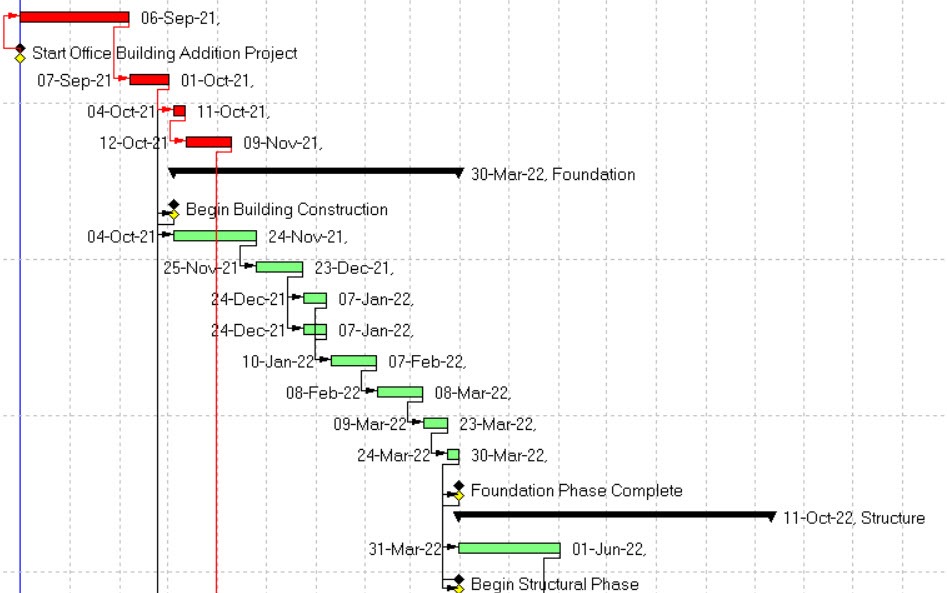In the realm of construction projects, adhering to project timelines is of paramount importance. However, various factors can lead to delays, necessitating an extension of time (EoT) to complete the remaining work.

This article will delve into the concept of EoT, reasons for project delays, delay accountability, and the impact of EoT on project costs.
Additionally, we will explore the proactive measures employers and contractors can take to mitigate delays in construction projects.
What is Extension of Time?
Every construction project has a predefined timeframe specified in the contract. If the project cannot be completed within this stipulated period, an extension of time (EoT) is required to finish the remaining work. EoT allows for a revised timeline, known as the extended timeline, within which the project can be completed.
Illustration of EoT
To better understand EoT, consider a project with a designated 36-month timeframe.
If the project encounters delays and cannot be completed within 36 months, the client and contractor mutually agree upon a revised timeline.
The client then awards an extension of time to the contractor, enabling them to complete the remaining work within the extended timeframe.
Reasons for Project Delays
Numerous factors contribute to delays in construction projects, including:
- Delay in handing over the work site to the contractor.
- Challenges in obtaining statutory licenses and government approvals.
- Delayed release of construction drawings.
- Procurement delays in acquiring required materials.
- Manufacturing cessation or delays by approved manufacturers.
- Transportation delays of materials.
- Force majeure events such as natural calamities, unrest, or pandemics.
- Delayed payment releases by employers.
- Insufficient skilled manpower.
- Poorly planned completion schedules and scope changes.
Delay Accountability
Determining the party responsible for project delays is crucial. Contractors are typically accountable for delays caused by inadequate resource mobilization, poor planning, or construction errors.
On the other hand, employers may be responsible for delays in handing over the work site, obtaining approvals, or timely payment releases.
Force majeure events or changes in government policies are often exempt from accountability.
Implications of Delay in a Contract
Delays inevitably increase the contractor’s costs, primarily due to extended overhead expenses. Contractors are not entitled to cost compensation for delays attributable to their actions.
Liquidated damages may or may not be applicable as per the contract terms. However, contractors can claim cost compensation if delays occur due to employer-related factors.
Force majeure or other external factors may require explicit contractual provisions for cost compensation.
Mitigating Delays: Employer’s Perspective
To avoid delays in construction projects, employers can take several proactive measures, including:
- Timely provision of the work site to contractors.
- Obtaining necessary permissions and licenses before project commencement.
- Timely issuance of drawings and decisions.
- Prompt payment releases as per the contract terms.
- Finalizing a master schedule and monitoring resource mobilization.
- Collaborating with stakeholders to ensure timely progress.
Mitigating Delays: Contractor’s Perspective
Contractors can also play a significant role in mitigating project delays through the following actions:
- Preparing a detailed master schedule.
- Employing realistic methodologies and considering resource requirements accurately.
- Timely mobilization of necessary resources.
- Adequate deployment of skilled manpower.
- Effective communication with stakeholders.
- Ensuring workplace safety to avoid accidents.
- Maintaining quality standards to minimize rework.
Impact of EoT on the Cost of Contract
EoT implies an extended timeline for the completion of a construction project, which inevitably has implications for the project’s costs.
When an extension of time is granted, it allows for additional expenses to be incurred by the contractor. These costs can arise from several factors, including extended overhead expenses, increased labor costs, extended equipment rental, and prolonged project management costs.
One of the primary cost implications of EOT is the prolongation of overhead expenses. Contractors have ongoing overhead costs that need to be covered throughout the project’s duration, including site office rental, utilities, insurance, and administrative expenses.
When a project experiences delays, these overhead expenses continue to accrue for an extended period, leading to an increased financial burden for the contractor.
Labor Costs
Labor costs also contribute significantly to the overall cost of a construction project.
With an extension of time, the contractor needs to retain the workforce for a more extended period, resulting in additional labor costs. This includes wages, benefits, overtime payments, and potentially the need for additional skilled workers to maintain productivity levels.
The longer the project duration, the greater the impact on labor costs.
Equipment Rental
Equipment rental is another aspect affected by EoT. Depending on the original project timeline, contractors often rent equipment and machinery for specific durations.
When delays occur, the rental period needs to be extended, leading to additional costs for the contractor.
Furthermore, the prolonged project duration may also increase equipment maintenance and storage expenses.
Other Cost
Project management costs can escalate as a result of EoT. Project managers and support staff are required to oversee and coordinate the project throughout its duration.
When delays occur, these professionals must continue their involvement for an extended period, increasing management costs. This includes salaries, benefits, and any additional expenses associated with managing the project over an extended timeline.
It is important to note that the cost implications of EoT may vary depending on the specific contractual arrangements and provisions.
Some contracts may include provisions for cost compensation when delays occur, while others may have liquidated damages clauses or particular mechanisms for addressing delay-related expenses.
Therefore, it is essential for both employers and contractors to carefully review and understand the contractual terms regarding EoT and its impact on project costs.
Tools for EoT Determination
Several project management tools can assist in determining and managing EoT effectively. These tools offer features such as:
Project Scheduling Software: Advanced project scheduling software, such as Primavera P6 and Microsoft Project, enables critical path analysis, schedule updates, and resource leveling, facilitating the identification and assessment of delays.
What-If Analysis Tools: What-if analysis tools allow project managers to simulate different scenarios and evaluate the potential impact on project schedules. This aids in assessing the need for an EoT and exploring alternative approaches.
Document Management Systems: Efficient document management systems facilitate proper documentation of project progress, delays, and contractual obligations. They support the evidence required for EoT claims and dispute resolution, if necessary.
Collaboration Platforms: Online collaboration platforms enable real-time communication, document sharing, and collaborative decision-making, streamlining project progress monitoring and mitigating delays.
How can Primavera P6 help to determine the extension of time (EoT)?
Primavera P6 is a powerful project management software widely used in the construction industry to plan, schedule, and manage projects.
It can also be a valuable tool in determining the extension of time (EoT) for construction projects. Here are some ways in which Primavera P6 can assist in the EoT determination process:
Critical Path Analysis
Primavera P6 allows for critical path analysis, which helps identify the activities that significantly impact the project’s overall duration. By analyzing the critical path, project managers can pinpoint activities causing delays and assess their impact on the project timeline. This analysis is crucial in determining whether an EoT is necessary.
Schedule Updates
Primavera P6 enables updating project schedules with actual progress and delays. The software automatically recalculates the project’s schedule and identifies any potential schedule deviations by incorporating the actual progress information.
This feature helps project managers assess whether the project is on track and if an EoT is warranted based on the current progress and delays.
Resource Leveling
Primavera P6 allows for resource leveling, which helps optimize resource allocation and identify resource constraints that may be causing delays.
By analyzing the resource allocation and availability, project managers can determine if insufficient resources impact the project timeline and whether an EoT is necessary to accommodate resource constraints.
Schedule Impact Analysis
When a delay occurs, Primavera P6 can perform a schedule impact analysis to assess the ripple effect on the project timeline.
This analysis helps determine how the delay in one activity or a series of activities impacts subsequent activities and the overall project duration.
Project managers can evaluate the need for an EoT and its duration by quantifying the schedule impact.
What-If Scenarios
Primavera P6 allows for creating what-if scenarios, which help simulate the impact of different scenarios on the project schedule.
Project managers can model potential changes, such as accelerating certain activities or allocating additional resources, to assess their impact on the project timeline. This feature assists in evaluating alternatives and determining if an EoT is the most appropriate solution.
Also visit Training Primavera.
Reporting and Documentation
Primavera P6 provides comprehensive reporting capabilities, allowing project managers to generate detailed reports on project progress, delays, and schedule analysis.
These reports can serve as valuable documentation when requesting an EoT, providing evidence of the factors causing delays and their impact on the project timeline.
By leveraging the capabilities of Primavera P6, project managers can have a clearer understanding of project schedules, delays, and critical paths, facilitating the determination of an extension of time.
It helps analyze the project’s current status, evaluate the impact of delays, and generate reports supporting the EoT request.
However, it’s important to note that Primavera P6 is a tool, and determining an EoT ultimately requires professional judgment, considering contractual obligations and stakeholder collaboration.
Conclusion
In conclusion, an extension of time in construction projects has significant implications for project costs. Contractors may face increased overhead expenses, higher labor costs, extended equipment rental, and additional project management costs.
It is crucial for all parties involved to understand and address these cost implications through clear contractual provisions and proactive measures to mitigate delays.
By fostering collaboration, effective communication, and timely decision-making, employers and contractors can work together to minimize the impact of EoT on project costs and ensure successful project completion.






